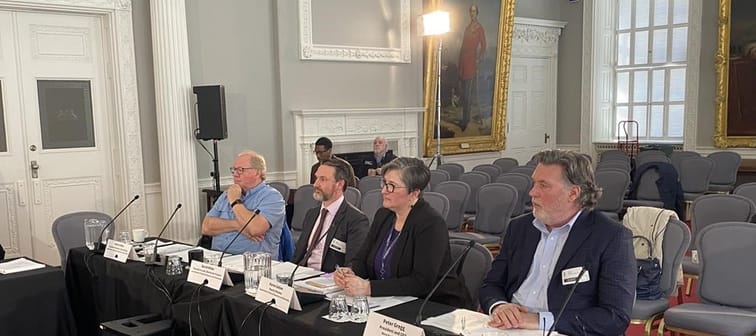Talks continue on how to finance a power line that would run parallel to an existing connection between Onslow, N.S., and Salisbury, N.B., Nova Scotia Power CEO Peter Gregg told the province's natural resources committee. The line, he said, would help carry power from future renewable energy projects between Nova Scotia and New Brunswick.
The project is considered a key element of Nova Scotia’s plan to close its coal plants and get 80 per cent of its energy from renewable sources by 2030.
But Gregg said the project is part of a larger puzzle that includes energy from renewable wind, solar and battery projects as well as continued imports of hydroelectricity from Labrador through the existing Maritime Link.
“It’s going to take a portfolio of solutions to allow us to get off coal,” he said. “You shouldn’t look at it as one investment that will allow us to get off coal, it needs to all work together to do that.”
Gregg said the 345-kilovolt power line project, often referred to as the “intertie,” received environmental approval late last year and detailed engineering studies are underway.
“We are continuing to work with the federal government and the Canada Infrastructure Bank on how to financially structure the project … final details haven’t been worked out,” he said.
Gregg later told reporters the total cost could double to $1.4 billion if the power line eventually runs west to Point Lepreau, N.B., as planned. He said he was confident the scaled-down project can be delivered on time, although he couldn’t give an exact date when construction would begin.
“It’s either 2027 or 2028,” he said. “It’s a critical project that will allow us to add about 1,000 megawatts of wind (power) to the system.”
Last fall, Nova Scotia said it would be too expensive to take part in the original Atlantic Loop proposal, a grid project that would have transferred hydroelectricity to the province from Quebec and Newfoundland and Labrador. The government had said capital cost estimates had tripled to more than $9 billion, and Quebec had become reluctant to divert its hydro from other priorities.
Karen Gatien, deputy minister of natural resources, told the committee that the province's energy goals beyond 2030 might need an expanded project similar to the original Atlantic Loop.
“We still need to reach net zero by 2050 and (an expanded loop) just might help us get there,” said Gatien. “But there are many other pieces of our plan that are essential for reaching 2030. Pieces we need to do regardless of the loop.”
This report by The Canadian Press was first published April 23, 2024.
Sponsored
Trade Smarter, Today
With CIBC Investor's Edge, kick-start your portfolio with 100 free trades and up to $4,500 cash back.





